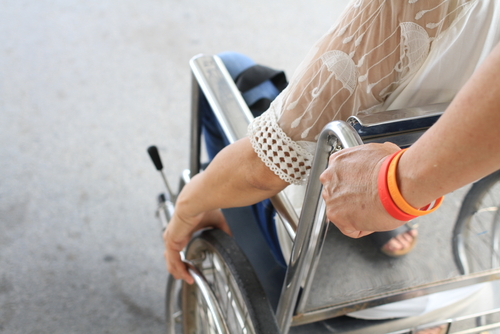For many claimants, the road to Social Security disability benefits includes a pit stop at a hearing before a Social Security judge. As experienced disability attorneys who have represented thousands of Social Security claimants, our view is that this is a claimant’s best opportunity to win his or her case. At hearing, the claimant has the opportunity to present a wide array of records and other evidence in support of the claim, including the opinions of physicians who have examined and treated the claimant. While this evidence can go a long way in proving disability, the Third Circuit Court of Appeal’s recent ruling in Chandler v. Commissioner of Social Security makes clear that the ultimate decision on the issue of Disability belongs to the ALJ.
“The ALJ–not treating or examining physicians or State agency consultants– must make the ultimate disability and RFC determinations,” the court ruled, referring to residual functional capacity, a claimant’s ability to perform work despite any physical or mental impairments.
Plaintiff Kacee Chandler filed a claim for Supplemental Security Income (SSI) and Social Security Disability Insurance (SSDI) benefits asserting that she is no longer able to work as a bookkeeper, receptionist and housekeeper due to reflexive sympathetic dystrophy (RSD). RSD is a nerve disorder characterized by chronic severe burning pain, pathological changes in bone and skin, excessive sweating, tissue swelling and extreme sensitivity to touch. The Social Security Administration (SSA) denied Plaintiff’s claim and, following an appellate hearing, an SSA Administrative Law Judge (ALJ) upheld the denial, finding that Plaintiff retained the RFC to perform sedentary work with certain limitations and that jobs meeting those criteria were available in the national economy.
On further review, the District Court reversed the ALJ’s decision, ruling that the ALJ’s RFC determination was not supported by substantial evidence. The Third Circuit subsequently reversed the District Court and affirmed the Administrations final decision, ruling that the District Court overstepped its bounds and that the ALJ’s decision was based on ample support. Specifically, the court found that the ALJ was justified in relying on the opinion of one Dr. Popat, a state agency medical consultant who, on review of some medical records and without a physical examination, determined that, despite her impairment, Plaintiff retained the ability to occasionally lift or carry ten pounds, climb stairs, balance, stoop, kneel, crouch and crawl, and that she had no manipulative, visual, communicative or environmental limitations.
The court disagreed with the district court’s finding that the ALJ should not have relied on Dr. Popat’s opinion because it did not take into account medical records developed after the opinion was given and contradicted the opinion of Plaintiff’s treating physician. “Although treating and examining physician opinions often deserve more weight than the opinions of doctors who review records…the law is clear . . . that the opinion of a treating physician does not bind the ALJ on the issue of functional capacity,'” the court ruled, quoting its opinion earlier this year in Brown v. Astrue, 649 F.3d 193, 197 n.2 (3d Cir. 2011). In this case, Dr. Popat’s opinion was supported by other evidence in the record and, according to the court, the ALJ did not err in relying on it.
As a result, the court reversed the district court’s judgment and affirmed the ALJ’s ruling denying disability.
The main lesson to be learned from the Court’s ruling is the importance of developing the medical case early enough to make sure that all supportive evidence is available to the medical reviewer at the initial step in the process. One never wants a treating physician to state that his or her patient is “disabled.” Far more valuable to a decision-maker is a statement summarizing the patient’s functional limitations in such a way as to enable to the decision-maker to draw the only logical conclusion, that the claimant is unable to perform substantial gainful activity.






